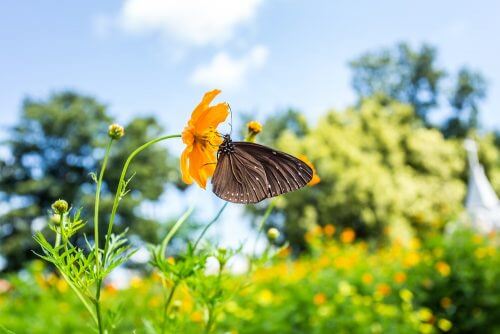Insects provide important environmental services for human activities such as: pollination of food plants or other cultivated plants, and moreover control of pest populations. All of this clarifies the fact that the fate of insects is intertwined with the fate of humanity as in the fate of many other species, and the outstanding example is of course the disappearance of the bees

One of the most important factors for a healthy environment are insects that are found in the air, on land and in water, they eat and excrete, pollinate, scatter seeds and are an essential source of food for frogs, lizards, birds, mammals and also for humans.
All of these illustrate their great importance for the efficient functioning of the environment, in many populations insect species are considered a delicacy and recently there is a development in the direction of integrating insects as a food source in the Western world.
Insects provide important environmental services for human activities such as: pollination of food plants or other cultivated plants, and moreover control of pest populations. All of this clarifies the fact that the fate of insects is intertwined with the fate of humanity as in the fate of many other species, and the outstanding example is of course the disappearance of the bees.
But it turns out that in large parts of the world many insect species are threatened and their populations are declining and disappearing https://www.cabi.org/bookshop/book/9781789241686/.
Insect species are disappearing at a rapid rate also and mainly because of the destruction of equatorial forests. Researchers warn that it is this disappearance and loss that will harm people and the environment. https://www.sciencedirect.com/science/article/pii/S0006320719317823
Another reason for damage to insects is the loss of habitats caused in part due to "monoculture", large areas where one crop causes damage to the quality of the soil and the habitats of insects due to damage to their ability to move between different habitats for reproduction and food. Other reasons are the excessive use of pesticides and fertilizers, as well as the spread of foreign species.
Above all there is the main hazard, which is global warming, insect populations and species react to climate change in a different, complex and integrated way. Climate change causes extreme weather phenomena, including fires that harm insect populations and change the relationship between good insects and pests, when the change is in favor of the pests.
The different effects on insects vary according to populations, species and genetic predispositions shaped by and in response to previous geological events. There are insect species that adapt and live well in an environment modified by man, whether in cities or in an agricultural environment, and it turns out that these are mostly harmful species.
But many specialized species require unique conditions or a specific host species to live. Among the specialized species are parasitic wasps and predatory beetles, i.e. beneficial species. These specialized species are being harmed at an alarming rate, especially in equatorial forests that are being cut down. As habitats shrink, populations of specialized insects disappear, so do insects associated with water bodies that dry up due to drought https://onlinelibrary.wiley.com/doi/full/10.1111/fwb.13360
On the other hand, it is precisely the pests that adapt to the changes created by man. Among the ones that adapt mainly are species of flutterers whose larvae cause damage in agriculture.
A group of scientists and researchers offer ways to treat the problems facing the beneficial insects and improve their condition https://www.nature.com/articles/s41559-019-1079-8. A road map that will enable long-term survival and ensure the continuation of environmental services beneficial to humans such as: pollination of crops, control and control of pests through predation and parasitism, and maintenance of healthy soil. The two main solutions are the mitigation of global warming and stopping deforestation in general and the equatorial forests in particular.
Recently, a detailed plan has been proposed that focuses on in defined and unique habitats / such as groves, grassy areas, caves, waterways and even cities. The proposed solutions require investments in conservation instead of destruction, such as for example
Implementation of a network of corridors where there will be natural plants, the corridors will be between areas of agricultural crops and will allow insects to move in the area. Planting plants beneficial to insects between and around agricultural plots, planting plants on the sides of roads and paths, stopping the flow of pollutants into rivers and streams and restoring their banks with natural vegetation. Reducing the use of insecticides and increasing the use of natural enemies such as parasitic wasps or predatory beetles and increasing green areas in urban settlements and planting on roofs
Many studies that touch on the subject illustrate the need for a solution by restoring living areas and habitats that will allow spaces that support living for diverse populations of insects that are disappearing, it is appropriate that the recommendations be realized and implemented, because otherwise the future will be bleak.
